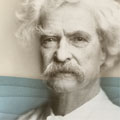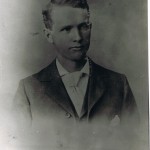
A statue of New York Yankee Joe DiMaggio overlooks Taylor Street in Chicago's Little Italy neighborhood
I kept thinking about race as we walked along Taylor Street in what’s left of Chicago’s Little Italy. Where Italian businesses once stood, LA Tan, Yummy Thai, CousCous and an Irish bar, Drum & Monkey, now thrive.
I recalled our earlier interview in the Missouri town of Hannibal—remember that name—with the local newspaper’s editor who said she had no reporters of color. An Italian-American reporter was as close as she came, she said.
Malcolm X, James Baldwin and other influential activists and writers argued that Italians were not always white. “Well, Hannibal, the most successful general that ever lived, was a black man,” Malcolm X said in in a 1963 interview.
Recalling Hannibal’s conquest of Rome, Malcolm X said: “No Italian will ever jump up in my face and start putting bad mouth on me, because I know his history. I tell him when you talk about me, you’re talking about your pappy, your father. He knows his history, he knows how he got that color.”
Baldwin suggested that Italians arrived in the United States without a sense of America’s color line. Usually they were categorized as white, though parts of the Jim Crow South insisted that, historian Matthew Frye Jacobson writes, “Italians occupied a racial middle ground within the otherwise unforgiving binary caste system of white-over-black.”
So Italian-Americans participated in the lie of white supremacy, Baldwin asserted, escaping the middle ground and learning to demonize black people.
Standing in front of the Taylor Street statue to Joe DiMaggio, I recalled not only the N.Y. Yankee with the 56-game hitting streak and his later life as Mr. Coffee and Mr. Marilyn Monroe, but also his lack of leadership in encouraging black players to enter the majors and join the Yankees.
Did DiMaggio and other Italian-Americans embrace their whiteness, as Baldwin wrote, “because of the necessity of denying the Black presence, and justifying the Black subjugation”? In distancing themselves from blacks, in debasing and defaming blacks, Baldwin concluded “they debased and defamed themselves.”
Loren Ghiglione























